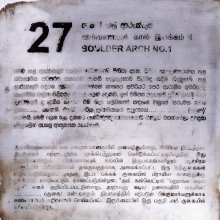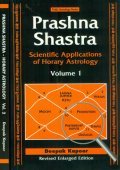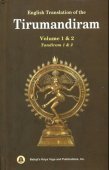Brahmin: 9 definitions
Introduction:
Brahmin means something in Buddhism, Pali, Hinduism, Sanskrit, Jainism, Prakrit, the history of ancient India. If you want to know the exact meaning, history, etymology or English translation of this term then check out the descriptions on this page. Add your comment or reference to a book if you want to contribute to this summary article.
Images (photo gallery)
In Hinduism
Natyashastra (theatrics and dramaturgy)
Source: Shodhganga: Elements of Art and Architecture in the Trtiyakhanda of the Visnudharmottarapurana (natya)Brahmins (in Indian dramas) should be presented as “calm and brave”, as dictated by the Dhīroddhata classification of Heroes (nāyaka), according to the Viṣṇudharmottarapurāṇa, an ancient Sanskrit text which (being encyclopedic in nature) deals with a variety of cultural topics such as arts, architecture, music, grammar and astronomy.—In the Viṣṇudharmottarapurāṇa, it is narrated that Brahmins and merchants should be dhīrodātta i.e., brave and noble minded.

Natyashastra (नाट्यशास्त्र, nāṭyaśāstra) refers to both the ancient Indian tradition (shastra) of performing arts, (natya—theatrics, drama, dance, music), as well as the name of a Sanskrit work dealing with these subjects. It also teaches the rules for composing Dramatic plays (nataka), construction and performance of Theater, and Poetic works (kavya).
Shilpashastra (iconography)
Source: Shodhganga: Elements of Art and Architecture in the Trtiyakhanda of the Visnudharmottarapurana (shilpa)Brahmins are denoted in the Sanskrit language as Brāhmaṇa, and follows specific guidelines in the tradition of ancient Indian Painting (citra), according to the Viṣṇudharmottarapurāṇa, an ancient Sanskrit text which (being encyclopedic in nature) deals with a variety of cultural topics such as arts, architecture, music, grammar and astronomy.—The personalities like [e.g., Brahmin—brāhmaṇa], [...] are to be drawn to project them as noble and polite. Moreover, the costumes and accessories of different personalities in a picture are also described. The painter should adorn the picture of sages and Brahmins with the skin of black antelope and white garments respectively. Thus the Viṣṇudharmottarapurāṇa establishes the fact that even in the pictures; the people belonging to different class and profession [e.g., Brahmin] were projected with specific attire so that general people can equate the picture with the practical character.

Shilpashastra (शिल्पशास्त्र, śilpaśāstra) represents the ancient Indian science (shastra) of creative arts (shilpa) such as sculpture, iconography and painting. Closely related to Vastushastra (architecture), they often share the same literature.
In Buddhism
Theravada (major branch of Buddhism)
Source: Access to Insight: A Glossary of Pali and Buddhist TermsThe brahman (brahmin) caste of India has long maintained that its members, by their birth, are worthy of the highest respect. Buddhism borrowed the term brahman to apply to those who have attained the goal, to show that respect is earned not by birth, race, or caste, but by spiritual attainment. Used in the Buddhist sense, this term is synonymous with arahant.
Theravāda is a major branch of Buddhism having the the Pali canon (tipitaka) as their canonical literature, which includes the vinaya-pitaka (monastic rules), the sutta-pitaka (Buddhist sermons) and the abhidhamma-pitaka (philosophy and psychology).
In Jainism
General definition (in Jainism)
Source: HereNow4u: Tīrthaṅkara (ford maker) and Kevalīs (omniscient)A Brahmin is a practitioner of celibacy, truth, contentment and abiding alms seeker whereas a Kṣatriya is brave, expert of war tactics, brilliant, and effective. In preserving and maintaining religious order along with practice of celibacy, truth, character, etc. along with vigour is essential. A person born in a Brahmin caste is peaceful, of a good character and soft nature, also needs vigour and imposing personality. Propagation of non-violence (ahiṃsā) by a person like a Brahmin is not effective as he lacks bravery. But when a brilliant person from the Kṣatriyas courageously gives up weapons and warfare and royal grandeur and talks of ahiṃsā, certainly it has an impact.

Jainism is an Indian religion of Dharma whose doctrine revolves around harmlessness (ahimsa) towards every living being. The two major branches (Digambara and Svetambara) of Jainism stimulate self-control (or, shramana, ‘self-reliance’) and spiritual development through a path of peace for the soul to progess to the ultimate goal.
India history and geography
Source: Shodhganga: A translation of Jhaverchand Meghanis non translated folk talesBrahmin refers to “[Brahman (Brahmin)] He belongs to the highest caste of the Hindu. It is said that his origin is from the mouth of Lord Brahma {Brahma-the creator of the world}”.—It is defined in the glossary attached to the study dealing with Gujarat Folk tales composed by Gujarati poet Jhaverchand Meghani (1896-1947)

The history of India traces the identification of countries, villages, towns and other regions of India, as well as mythology, zoology, royal dynasties, rulers, tribes, local festivities and traditions and regional languages. Ancient India enjoyed religious freedom and encourages the path of Dharma, a concept common to Buddhism, Hinduism, and Jainism.
Languages of India and abroad
Sanskrit dictionary
Source: DDSA: The practical Sanskrit-English dictionaryBrahmin (ब्रह्मिन्).—a. Relating to Brahma. -m. An epithet of Viṣṇu.
Source: Cologne Digital Sanskrit Dictionaries: Monier-Williams Sanskrit-English Dictionary1) Brahmin (ब्रह्मिन्):—[from brahman] mfn. belonging or relating to Brahmă or Brahmā, [Taittirīya-āraṇyaka]
2) [v.s. ...] ‘possessing sacred knowledge’ Name of Viṣṇu, [Mahābhārata]
[Sanskrit to German]
Sanskrit, also spelled संस्कृतम् (saṃskṛtam), is an ancient language of India commonly seen as the grandmother of the Indo-European language family (even English!). Closely allied with Prakrit and Pali, Sanskrit is more exhaustive in both grammar and terms and has the most extensive collection of literature in the world, greatly surpassing its sister-languages Greek and Latin.
See also (Relevant definitions)
Starts with: Brahminakshatra, Brahmini, Brahminisha.
Ends with: Pataliputtaka Brahmin.
Full-text (+3162): Vipra, Dona Sutta, Manti, Bharadvaja, Addhariya Brahmana, Svadharma, Sadhusila Jataka, Tikanna, Devaraja, Viprangana, Khomadussa, Kauthumi, Kandarayana, Apaga, Telakani, Ekasala, Viprasevaka, Saketa Jataka, Arohana, Shibika.
Relevant text
Search found 215 books and stories containing Brahmin; (plurals include: Brahmins). You can also click to the full overview containing English textual excerpts. Below are direct links for the most relevant articles:
Historical Elements in the Matsya Purana (by Chaitali Kadia)
Varṇa (1): The Brāhmaṇas (Brahmins) < [Chapter 5 - Cultural history in the Matsya-Purāṇa]
Varṇa (2): The Kṣatriyas < [Chapter 5 - Cultural history in the Matsya-Purāṇa]
Varṇa (classification) (Introduction) < [Chapter 5 - Cultural history in the Matsya-Purāṇa]
The Gautami Mahatmya (by G. P. Bhatt)
Chapter 5 - Vināyaka and Gautama
Chapter 48 - Aśvattha and other Tīrthas
Puranic encyclopaedia (by Vettam Mani)
Expiatory Rites in Keralite Tantra (by T. S. Syamkumar)
1. Tantra and Kerala Brahmins < [Chapter 4 - Socio-Cultural aspects of Expiatory Rites]
8 (a). Historical Milieu of Expiatory Rites < [Chapter 4 - Socio-Cultural aspects of Expiatory Rites]
5.1. Concept of Impurity in Dharmaśāstras and Kerala Tantra < [Chapter 4 - Socio-Cultural aspects of Expiatory Rites]
Dvisahasri of Tembesvami (Summary and Study) (by Upadhyay Mihirkumar Sudhirbhai)
Chapter 14 - Instruction about learning the Vedas
Chapter 12 - Reviving a dead one
Sanskrit sources of Kerala history (by Suma Parappattoli)
1.5. The settlements of Kerala with people < [Chapter 2 - Historical details from Mahatmyas and Prashastis]
3. Sri-Vallabha-kshetra-mahatmyam < [Chapter 2 - Historical details from Mahatmyas and Prashastis]
2. The Sukasandesa by Mahakavi Lakshmidasa < [Chapter 4 - Traces of Historical Facts from Sandesha Kavyas and Short poems]
Related products
(+3 more products available)








